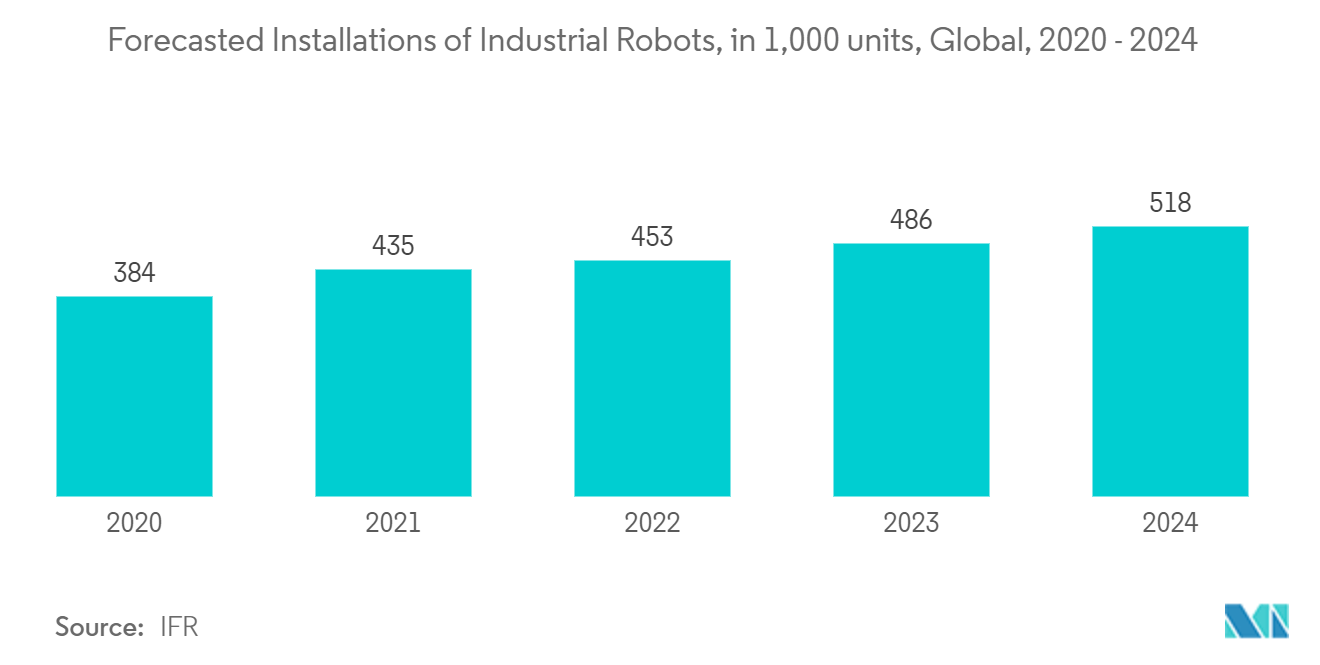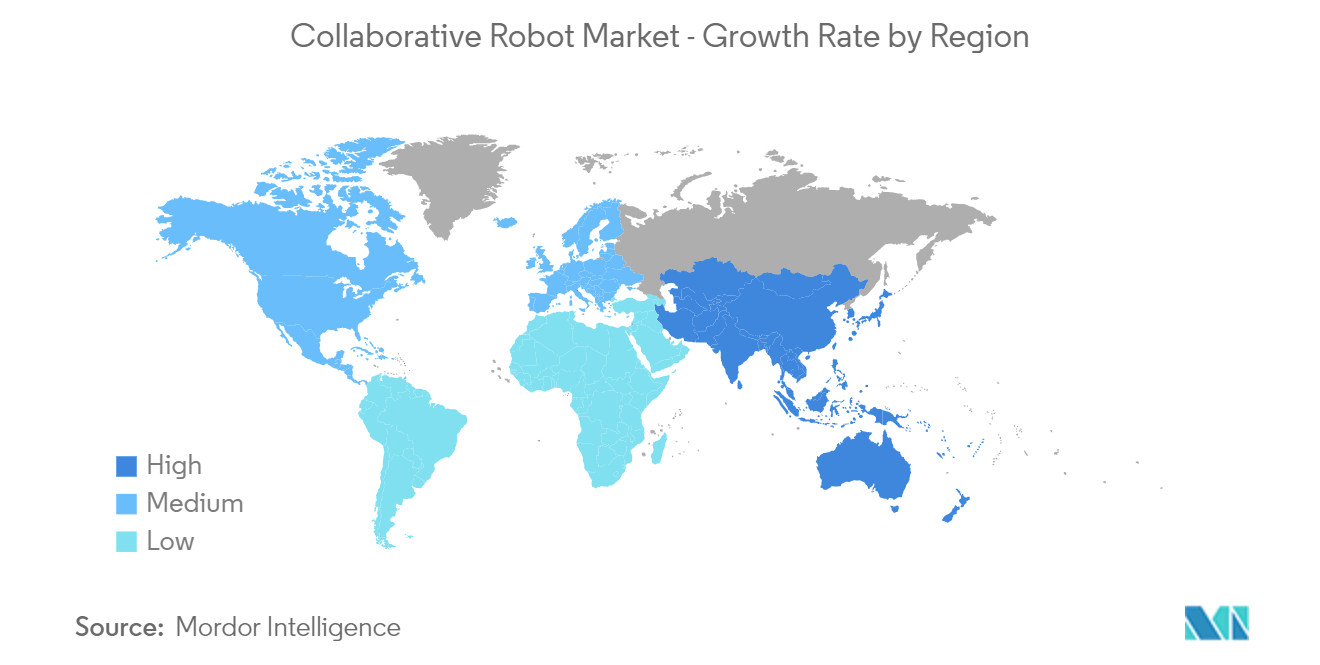Market Trends of Collaborative Robot Industry
Automotive End-User Segment is Expected to Hold Significant Market Share
- The automotive sector is witnessing significant growth in the number of units produced per day. The machinery on the production floor requires proper maintenance to shorten production cycles and increase production output. Cobots can easily achieve lower direct unit production costs. Moreover, depending on the assembly process considered, the throughput can be higher than in traditional robotic systems. These cobots are used in the automotive industry, where they can be applied to auto part manufacturing (assembling significant parts of a vehicle) and finished vehicle assembly.
- Collaborated robotics used for automotive applications are experiencing a massive upsurge in recent times owing to the proliferation of automotive plants in eminent Asian nations, including China, India, and Vietnam, and growing demand for automotive robotics from automakers in North America. Various prominent automakers, including BMW, Mercedes Benz, and Ford, have been deploying cobotson on their production floors to carry out myriad functions such as welding, car painting, and assembly line activities.
- The automotive industry has utilized robots in its assembly lines for various manufacturing processes for the past few years. Automakers are researching the use of robotics in even more processes, as cobots are accurate, flexible, more efficient, and dependable on these production lines. This has allowed the automotive industry to remain one of the most automated supply chains globally and one of the largest robot users. According to IFR, global industrial robot shipments will amount to about 518,000 in 2024.
- In April 2022, an automotive manufacturing company, Fiat, a subsidiary of Stellantis NV, invested EUR 700 million (USD 750 million) at its Mirafiori factory to produce 500 electric vehicles using state-of-the-art technology, such as collaborative robots. The company aims to automate its complex assembly line operations and quality controls, installing 11 cobots from Universal Robots A/S.
- The cobots used by Fiat would perform various assembly tasks, including quality control, screwdriving, dispensing, and visual inspection. In line with these initiatives, the company would use collaborative automation robots to free the operators from physically demanding and repetitive manual tasks so that they can be employed on processes with greater added value. Such initiatives by the companies in the market are expected to further fuel the demand for collaborative robots in the automotive industry.

Asia Pacific is Expected to Hold Significant Market Share
- The market for collaborative robots in the Asia Pacific is expanding significantly due to the growing number of industries in the region and their integration with automation to increase the ROI. The Asia Pacific collaborative market is predicted to be dominated by China with the growing production, sales, and trade of cobots in China.
- The Chinese market for collaborative robots is leading over the EMEA and Americas regions as the country continues to take industrial automation as the primary focus goal. For instance, the Ministry of Industry and Information Technology (MIIT) in Beijing released the "14th Five-Year Plan" for Robot Industry Development on 21st December 2021, focusing on promoting innovation to make China a global leader in robot technology and industrial advancement by including it in 8 critical industries for the next five years. As a result, the essential unique program "Intelligent Robots" was launched under the National Key R&D Plan on 23rd April 2022 with a funding of USD 43.5 million.
- In India, the collaborative robot market is significantly observing steady growth as many processes in the Indian market are not clearly standardized, and a large number of businesses still run in an unstructured way with lower levels of digitization compared to other developed markets.
- Moreover, India has a proven track record of implementing Industry 4.0 in small and medium enterprises through regional and national initiatives by the Government of India and MSMEs themselves. These enterprises have spearheaded the implementation of Industry 4.0 through digital MSME schemes by converting the existing infrastructure into digital, cloud-based technologies. With the industries getting digitized, one of the powerful technologies that evolved in Industry 4.0 is collaborative robots, which have paramount importance in contributing to Industry 4.0 and have made significant breakthroughs by creating an intelligent manufacturing environment.
- Japan is rapidly moving toward "Society 5.0", thus introducing the fifth chapter to the four major stages of human development in this new ultra-smart society. All things are connected through IoT technology, and all technologies are getting integrated, dramatically improving the quality of life. To realize this new era, the Government of Japan is taking various suitable steps to encourage numerous players, including start-ups and "hidden gems" among small- and medium-sized organizations, to come up with brand-new and innovative ideas for facilitating the world with solutions with problems such as labor shortages owing to population.


